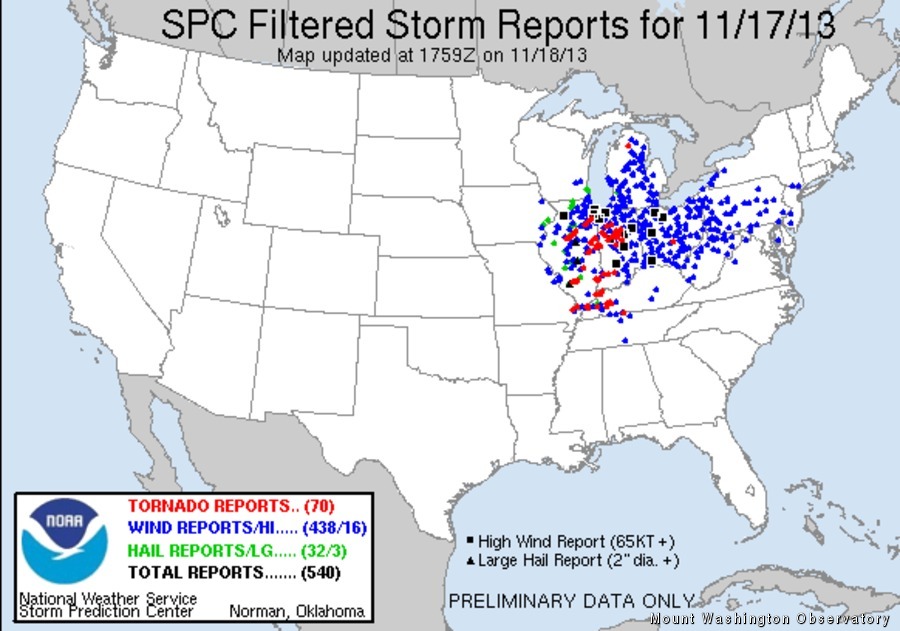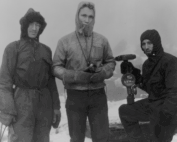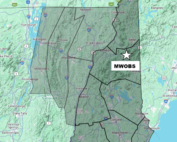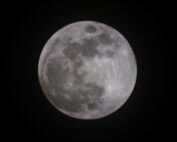Severe Weather
2013-11-18 17:34:29.000 – Samuel Hewitt, Summit Intern
11-17-13 Storm Reports courtesy NWS SPC
Yesterday’s severe weather outbreak across the Midwest/Ohio River Valley will go down as one of worst in recorded history for the month of November. Preliminary reports from the National Weather Service indicate that more than 70 tornadoes touched down across six states, the majority of which occurred in Illinois and Indiana. The most prominent tornado was a violent EF-4 (winds 166-200 mph) that passed through the town of Washington in Tazewell County, IL. Records show that this is the first EF-4 to strike Tazewell County since at least 1950.
Statistically speaking, Illinois receives 1 tornado per year on average in the month of November. The hotspot for November tornadoes is in Dixie Alley (LA, AR, MS, TN, AL, GA, western FL), where 33 tornadoes occur per year on average in November across the seven state region. This was the site of the most significant November outbreaks in recorded history, which occurred from the 21st-23rd of 1992. There were 105 tornadoes and 26 people lost their lives.
This event is a reminder that cold season tornado outbreaks can occur. Generally speaking, the instability needed for thunderstorm development is heavily reliant on how much daytime heating a region sees (the more the better). In yesterday’s case, marginal heating (temperatures 60 to around 70 Fahrenheit) was enough to produce thunderstorms. What set this event aside from a typical late spring/early summer one was the significant amount of wind shear that was present in the atmosphere. The shear compensated for the lack of heating to produce nearly 70 tornadoes. It is hard to believe that just one week ago, this region was blanketed with 0.5 inches of snow!
This same system crossed New England early this morning, producing heavy rain showers and a few rumbles of thunder. On the summit, we received 1.01″ of rain and winds gusted to 97 mph. Our thoughts and prayers are with all those affected by yesterday’s tornadoes.
Samuel Hewitt, Summit Intern
A Look at The Big Wind and Measuring Extreme Winds At Mount Washington
A Look at The Big Wind and Measuring Extreme Winds at Mount Washington By Alexis George Ninety-one years ago on April 12th, Mount Washington Observatory recorded a world-record wind speed of 231 mph. While
MWOBS Weather Forecasts Expand Beyond the Higher Summits
MWOBS Weather Forecasts Expand Beyond the Higher Summits By Alex Branton One of the most utilized products provided by Mount Washington Observatory is the Higher Summits Forecast. This 48-hour forecast is written by MWOBS
One Down, One To Go
One Down, One to Go By Ryan Knapp On my calendar for March 2025, I had two reminders of events to look forward to in the sky. The first occurred this past week with






